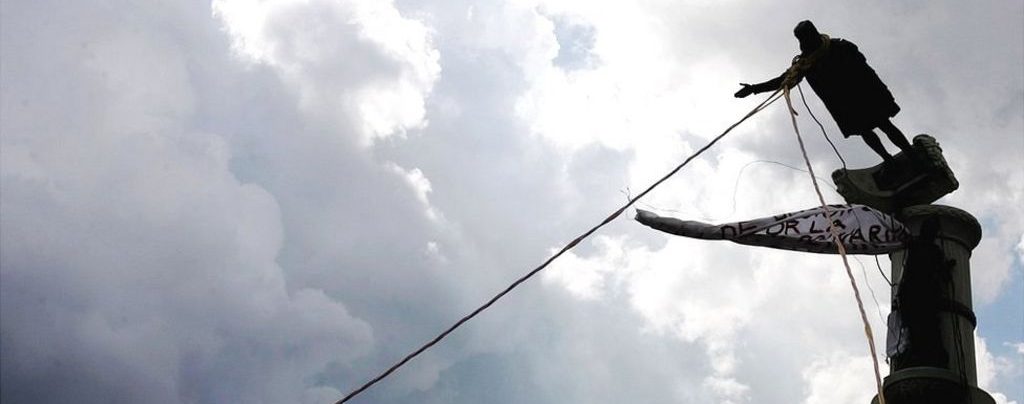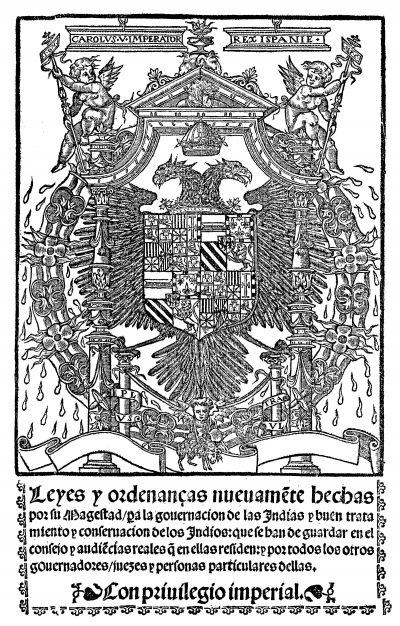Source:Sonrisas en el camino
Do-goodism removes the statues of Columbus
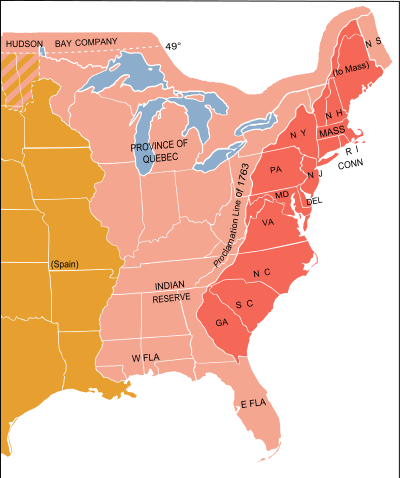
Map referring to 1776 (Declaration of Independence). Mississippi River, boundary of the territory of Spain (The statues of Columbus)
Americans are quite free to celebrate as they see fit, but their motivations – like everything else – can be subject to criticism.
Their justifications range from the indigenism of the “good savage”, to the historical hypocrisy of the British and Dutch who – since the 16th century – developed the Black Legend against the Spanish troops, whom they feared and failed to defeat and everything Spanish.
Dishonestly, today’s American leftists try to pin on the Spanish the outrages and crimes against the indigenous people that their beloved ancestors committed.
The very serious mortality among the Indians caused by the contagion of European diseases has already been discussed in a recent article. It was an entirely involuntary phenomenon, however wretched it turned out to be. To speak of genocide would be a manipulation of language, as is often done.
Why aren’t the statues and monuments to the Pilgrim Fathers and George Washington removed?
I think it is understandable that this is a rhetorical question, for the purposes of the debate.
It was the Spaniards who had the honour of first settling the coast of Florida (and some states further north), founding the first settlement in North America (the USA and Canada) that has survived to the present day: the city of St. Augustine (on the northern tip of Florida’s Atlantic coast), in 1565. It recently celebrated its 450th anniversary in 2015. From there, other Spaniards explored the entire coast of the Gulf of Mexico, penetrating inland at many points.
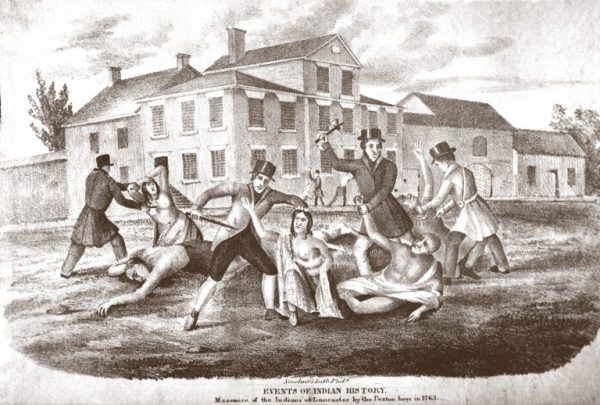
An engraving from the Library Company of Philadelphia depicting the massacre of Conestoga Native American tribe by the so-called Paxton Boys in Lancaster, 1763. (Courtesy of the Library Company of Philadelphia)
The first lasting settlement founded by the British, Jamestown (Virginia), dates from 1607, 42 years after St. Augustine. The second was Plymouth (Massachusetts) in 1620, where many of the Pilgrim Fathers of the Mayflower and the second ship that accompanied it settled.
But it was not Florida or the (later) southern states that spearheaded the founding of the great American nation, but the 13 northernmost British colonies, the southernmost of which was Georgia, bordering the Florida territory.
It was the descendants of the Pilgrim Fathers who massacred the Indians
It was the descendants of those early British settlers of the 13 colonies who led the mass westward expansion, first to the Appalachian Mountains (the British royal line of 1763) and then far beyond.
That movement displaced – and massacred – the Indians, not the Spanish, who generally lived with them and never pursued a systematic policy of eliminating them from large areas.
The first 13 colonies to declare independence in 1776 covered only the space between the Atlantic coast and the Appalachian mountain range, which runs more or less parallel to the coastline.
The Founding Fathers of the United States, George Washington, Thomas Jefferson, John Adams, Benjamin Franklin and the others, if only by omission, took for granted the westward expansion that the colonists had already made of their own accord.
As for the following years, the Founding Fathers treated Indians in their founding documents as “foreign nations”, who did not need to be compensated for lands taken from them, by hook or by crook.
The Indians aligned themselves with England in the War of Independence.
It is therefore logical that most of the Indian tribes allied themselves with Britain, against the 13 colonies, in the War of Independence (1776 – 1783).
At this point, in the face of the cynicism of today’s US do-gooders, it should be remembered that the Spanish Crown always treated the Indians of the Americas as “subjects”, not as foreigners, and certainly not as slaves. Another matter are the excesses that were committed on the ground. Let the European conquering country that is free of such sins cast the first stone!
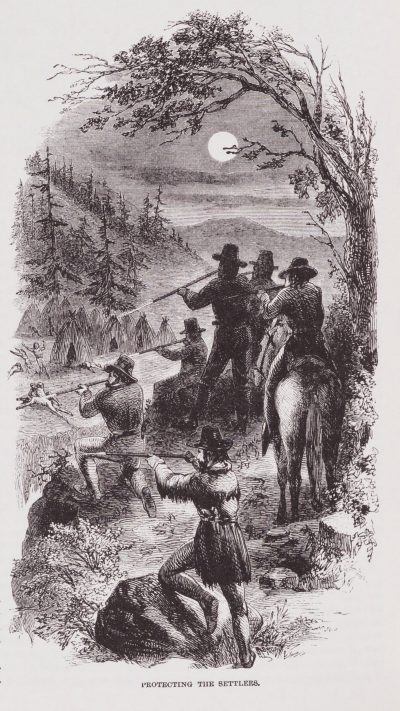
“Protecting The Settlers” Illustration by JR Browne for his work “The Indians Of California” 1864. Portraying a massacre by militia men of an Indian camp
Only deep Anglo-Saxon hypocrisy (and the black legend created by the Dutch and British) can explain the diametrically opposed treatment now given to the early British travellers and the Founding Fathers of the Republic, compared to that of the Spanish discoverers and their precursor, the great Genoese traveller (Italy would not be founded until 1861) Christopher Columbus.
It is the indigenists of the very progressive Berkeley University and others who should be held accountable for the behaviour of their ancestors, their great-great-grandparents, without trying – cowardly – to hide behind the Spaniards and Christopher Columbus.
Those who advocate such phobias, why don’t they go and live on the Indian reservations?
We all know that it was because the Crown of Spain organised the voyages of Christopher Columbus to the west of the Atlantic Ocean that the new continent was discovered. On that basis, the Portuguese, British and French followed.
If there was an earlier visit by the Vikings, as some now spread, it left virtually no record of it and, moreover, had no impact on the new lands.
Spain brought the Indians out of their tremendous backwardness
It was the transfer of knowledge and techniques that enabled the continent to greatly accelerate its development in all areas, overcoming the state of incipient Neolithic (i.e. the beginning of agricultural practice) that existed in almost all lands. The most advanced areas of Mexico, the Central American isthmus and its Mayan inhabitants, and the Inca areas of present-day Peru were the only exceptions to the prevailing primitivism. These were three areas where agriculture was dominant, but not livestock farming.
However, if, according to the do-gooders interpretation, the Spanish and European contribution was basically of a negative, destructive nature, they cannot logically accept what has resulted from that cultural and civilising contribution: the magnificent standard of living they enjoy today.
They should renounce their current living conditions and go and live in the Indian reservations.
Where did this mud come from, if not from the dust of Spanish and European cultures? Or are they pretending that without the civilising work of the Europeans, the Indians alone would have reached the level of development that the Americans now enjoy or something similar?
Their arguments do not hold water, nor are they consistent with what they claim to preach. It is hypocrisy.
Native Americans as subjects of law under the Spanish Crown
Only 19 years after Christopher Columbus first set foot on the islands of the American Caribbean, in December 1511, Fray Antonio de Montesinos – long before Fray Bartolomé de Las Casas (who hardly lived in the New World, but at the Court) – delivered his admirable “Advent Sermon” in Santa Domingo (Hispaniola) to the conquistadors themselves, advocating treating the Indians as equals, despite their obvious technical, social and cultural backwardness. Soon a riot broke out among those listening to him in person.
“By what right and justice do you hold these Indians in such cruel and horrible servitude? … Are they not men? Do they not have rational souls? Are you not obliged to love them as your own?
But the friars were not preaching in the desert. Only a year later, in 1512, the Crown issued the Ordinances of Burgos. In 1513, those of Valladolid.
The Ordinances of Burgos and Valladolid were the precursors of human rights.
The Ordinances of Burgos “were the first laws that the Hispanic Monarchy dictated for its application in the Indies or the New World or America in which it abolished indigenous slavery and organised its conquest, which were signed by the Catholic King Ferdinand II, on 27 December 1512, in the city of Burgos, for the government of the natives, Indians or indigenous people and which were the result of the first meeting of theologians and jurists …”
These Ordinances proclaimed “that the Indian had the juridical nature of a free man with all the rights of property, that he could not be exploited but as a subject, he had to work in favour of the crown.”
The Ordinances “are regarded as the [first] forerunner of the declaration of human rights, and of international law.”
To the believers in political correctness, could you show us a debate in London and equivalent royal ordinances of the Crown of England, at the beginning of its American adventure, or the middle, or the end? Why talk about the Protestant Netherlands and its exacerbated mercantilism? And they have dared to talk endlessly about Spanish greed?
Since such individuals are so hard-headed, or rather so dishonest, they should also be reminded that throughout South and Central America, where the Spanish Crown ruled, there are still many tens of millions of indigenous people, unlike in the United States.
Or, rather, unlike in the regions of the USA where the Spanish were not present because the Spanish never eliminated the indigenous people of Texas, New Mexico, Arizona, Colorado … California.
The special evolution of Argentina
In the exceptional case of Argentina, where there are practically no original inhabitants left today, the reason is as follows.
When Argentina became independent in 1810, most of its vast territory (the Pampas and Patagonia) was inhabited by a large number of Mapuche, Tehuelche, Puelche, Ranquel, Porteño Indians and many other peoples.
It was the Creoles – descendants of the conquistadors – who seized power after independence in 1810, who at the end of the 19th century (1878-1884), in the so-called Conquest of the Desert, razed and expelled these tribes to remote and marginal areas. Whether this constituted genocide is still debated. The Spanish – our ancestors – had nothing to do with it.
Again, today’s Argentines are the descendants of those who carried out such a raid on their country and they alone must face up to the excesses and crimes that may have taken place.
Share this article
On This Day
- 1572 Andrés Díaz Venero de Leyva founded the town of Guaduas (Colombia).
- 1578 Brunei becomes a vassal state of Spain.
- 1672 Spanish comic actor Cosme Pérez ("Juan Rana") dies.
- 1693 Painter Claudio Coello dies.
- 1702 The Marquis de la Ensenada was born.
- 1741 Spanish troops break the siege of castle San Felipe in Cartagena de Indias (Colombia).
- 1844 The Royal Order of Access to Historical Archives was promulgated.
- 1898 President Mckinley signed the Joint Resolution, an ultimatum to Spain, which would lead to the Spanish–American War.
History of Spain
26 August 2020
27 January 2021
Communism: Now and Then
23 December 2022
28 July 2021
